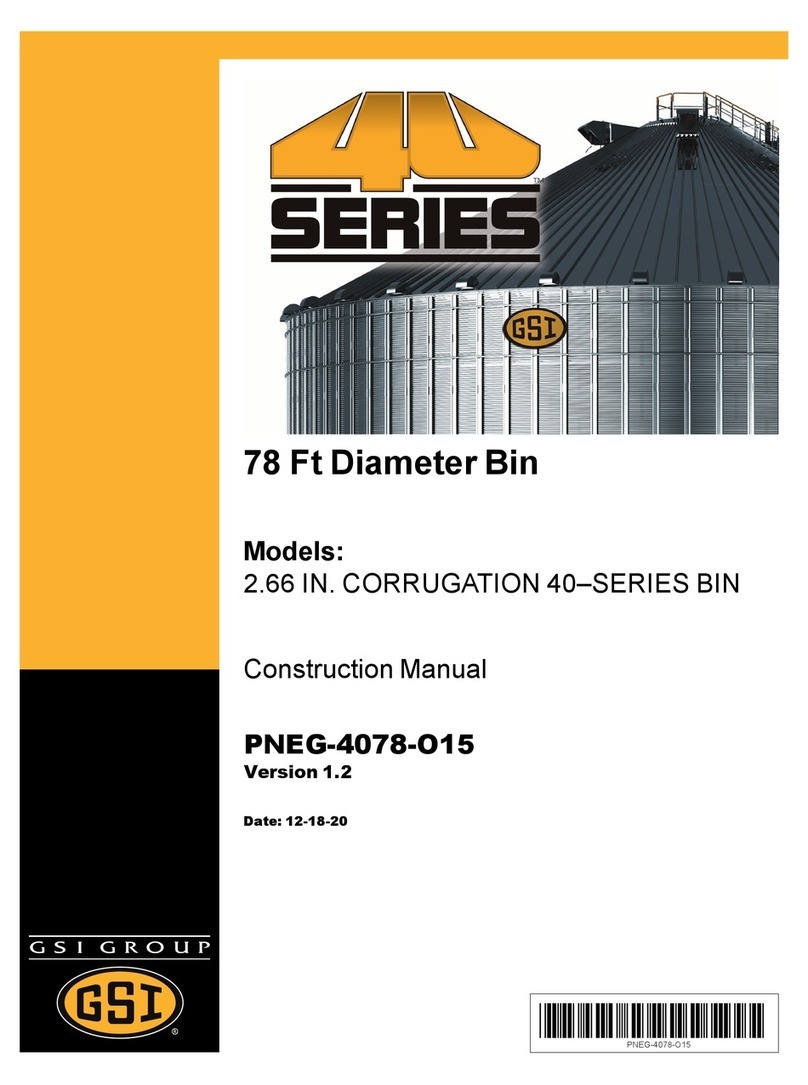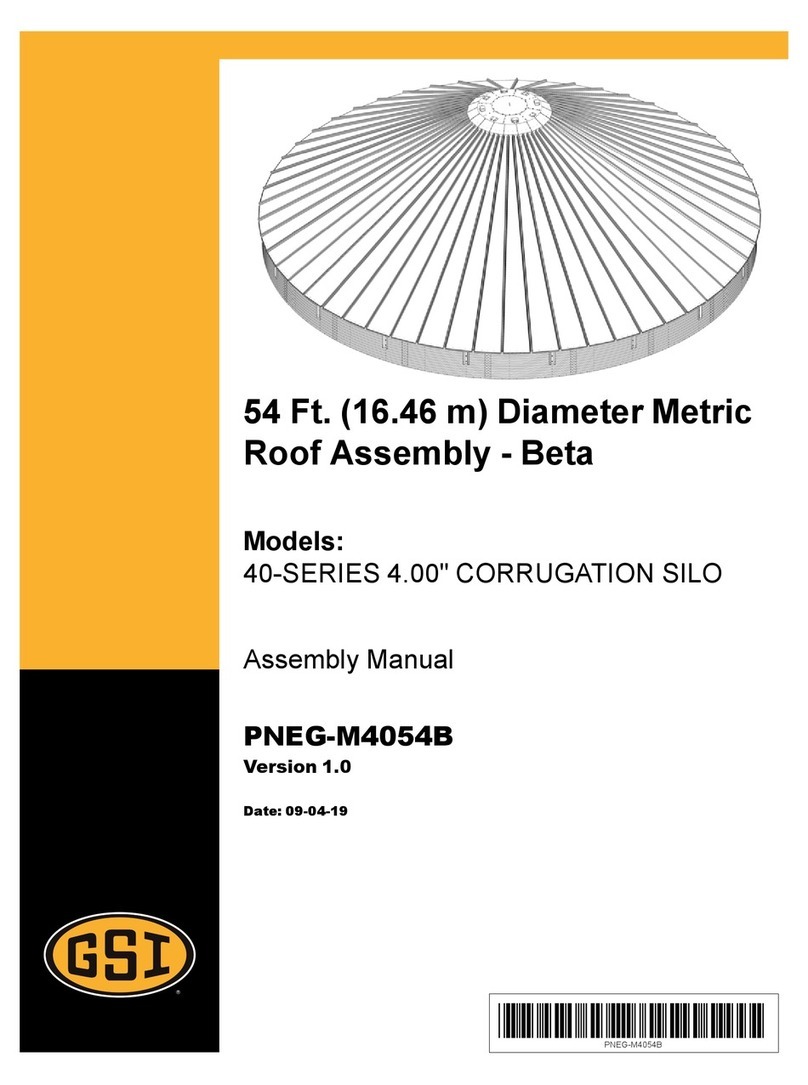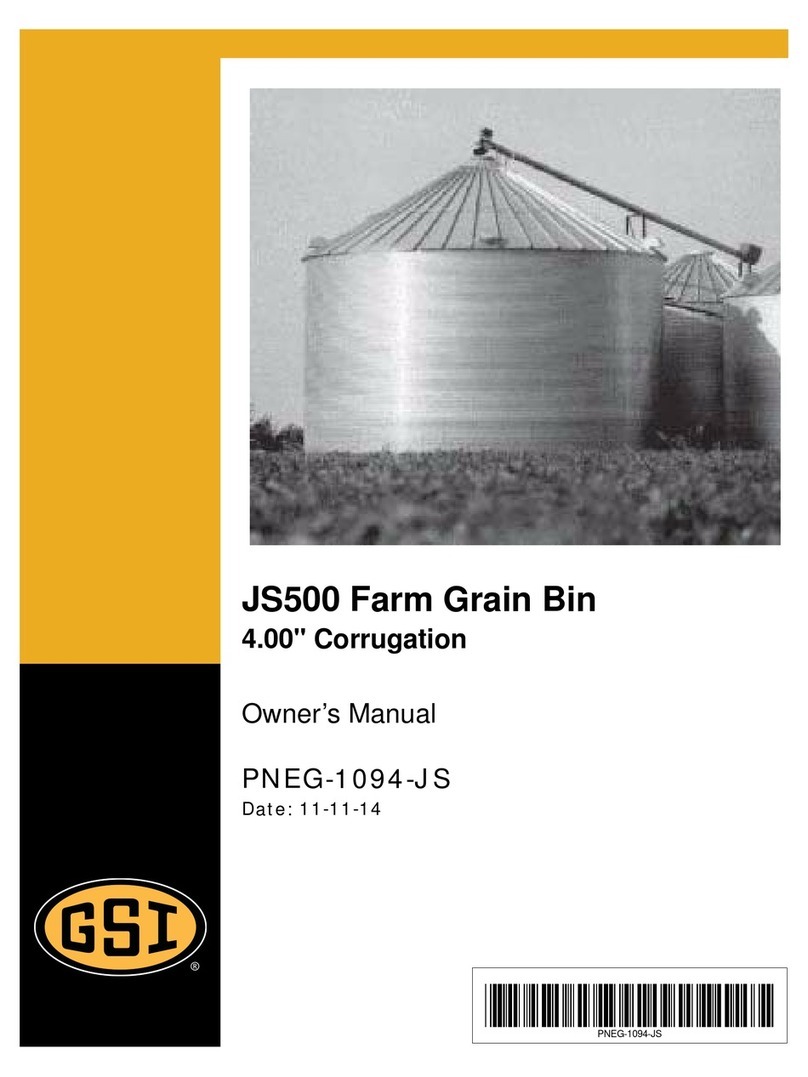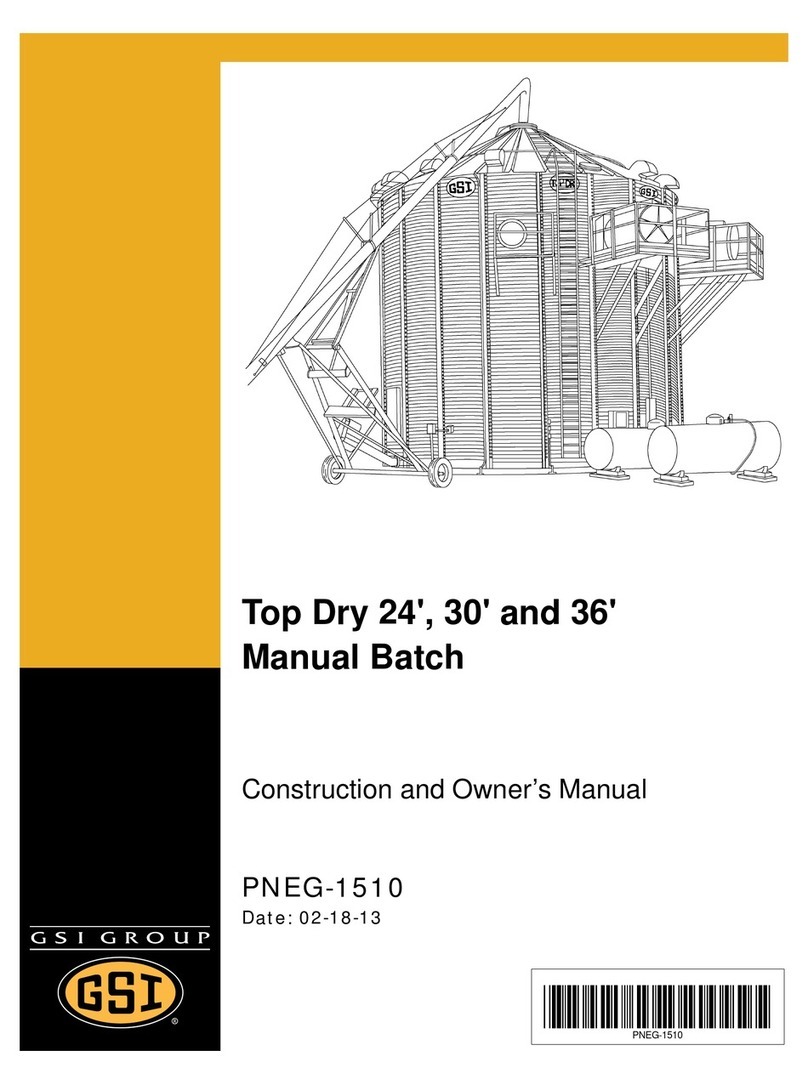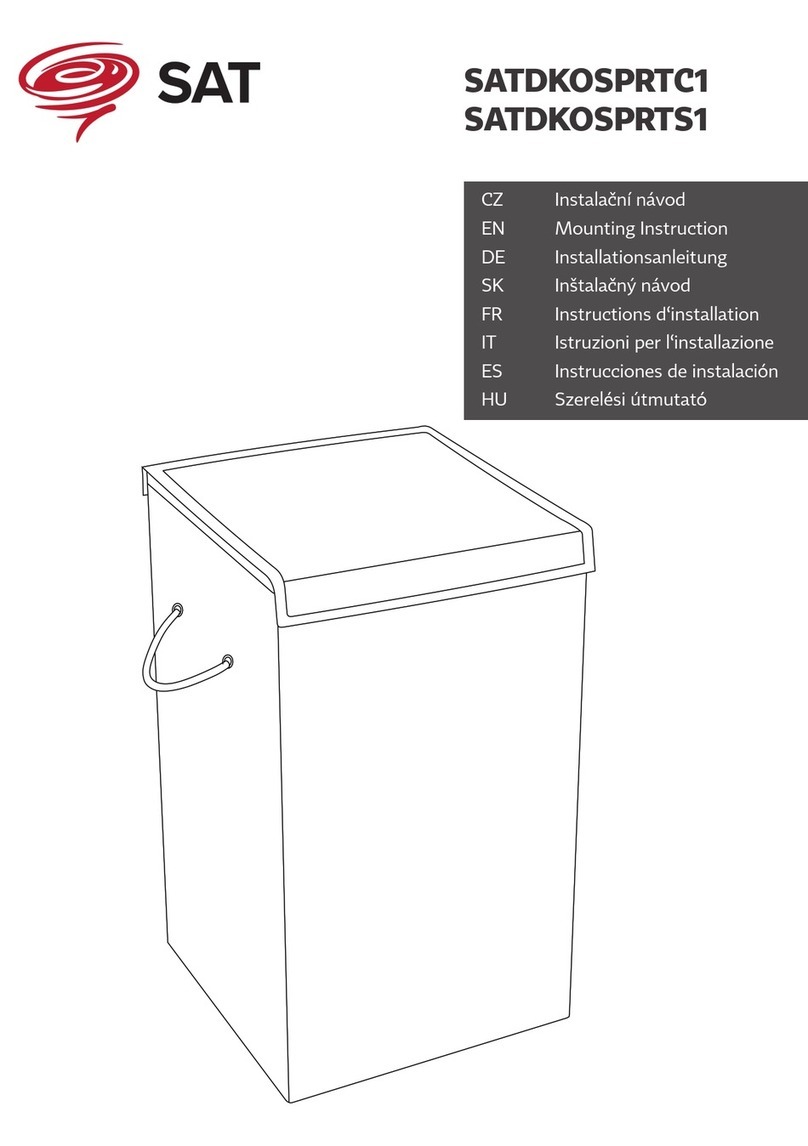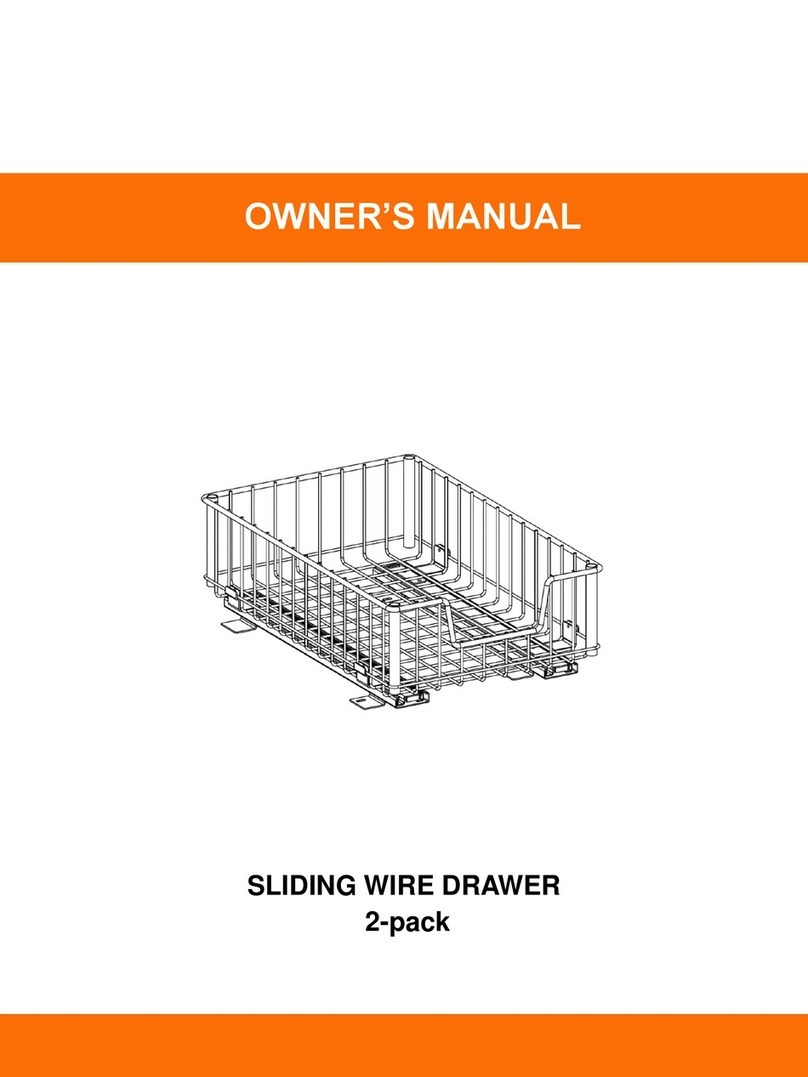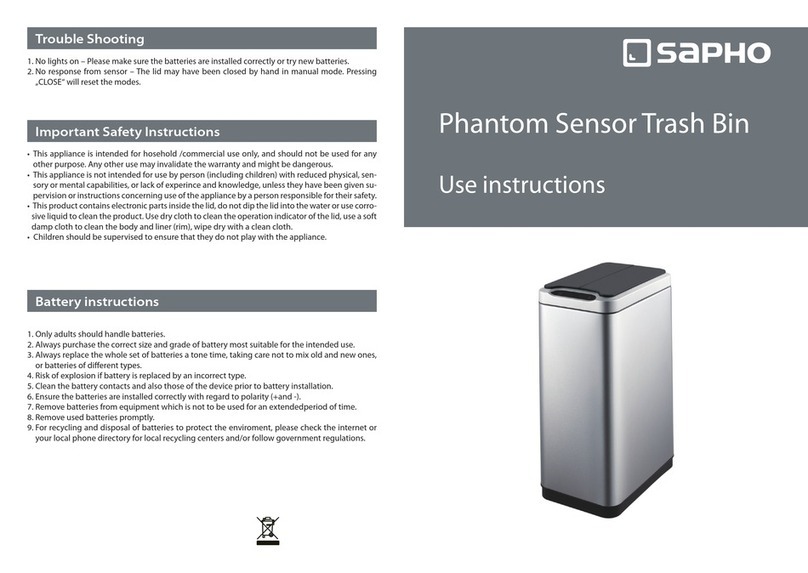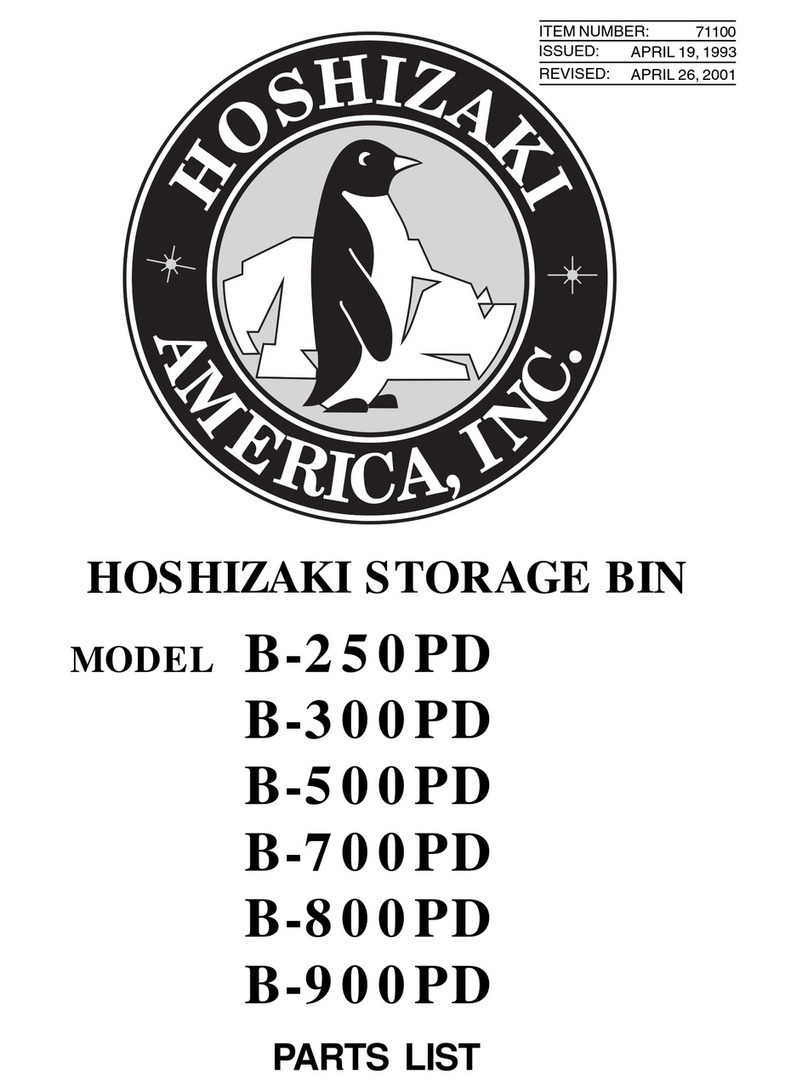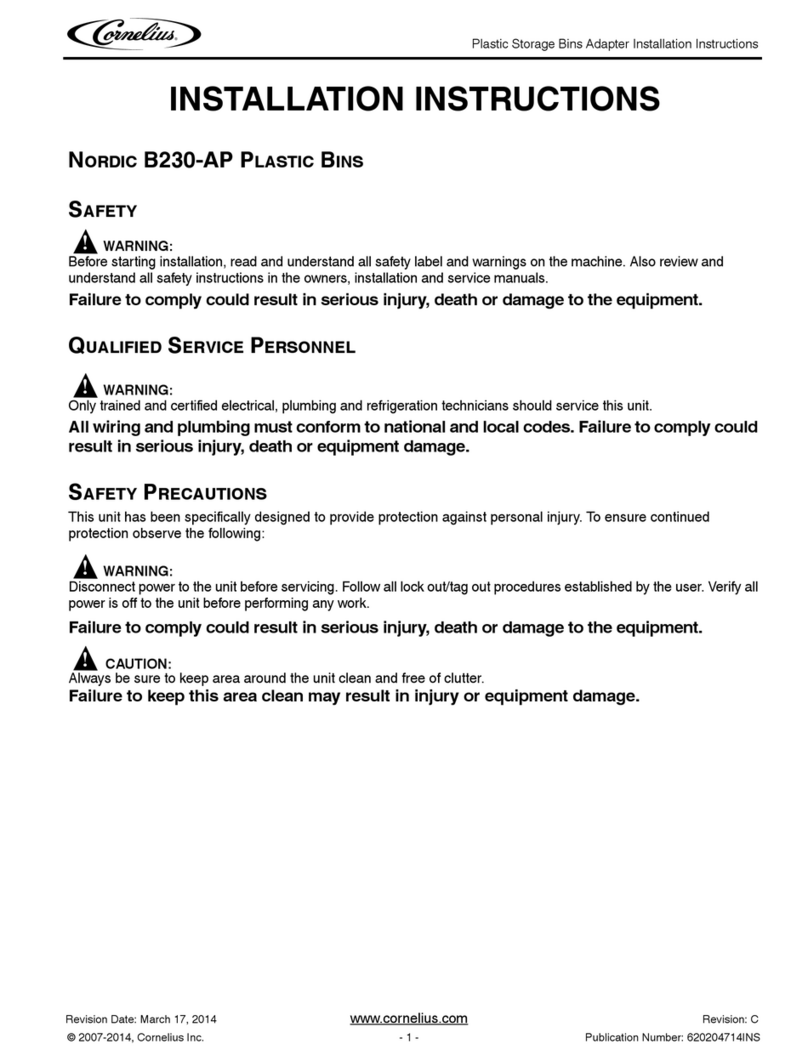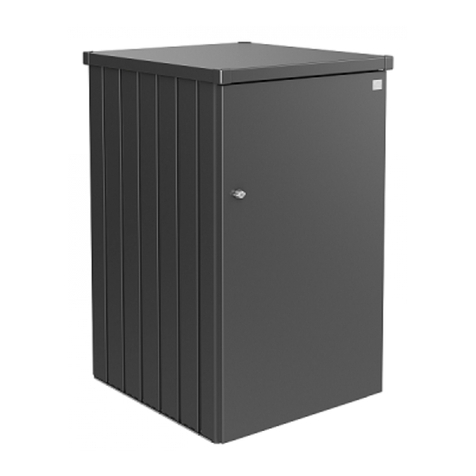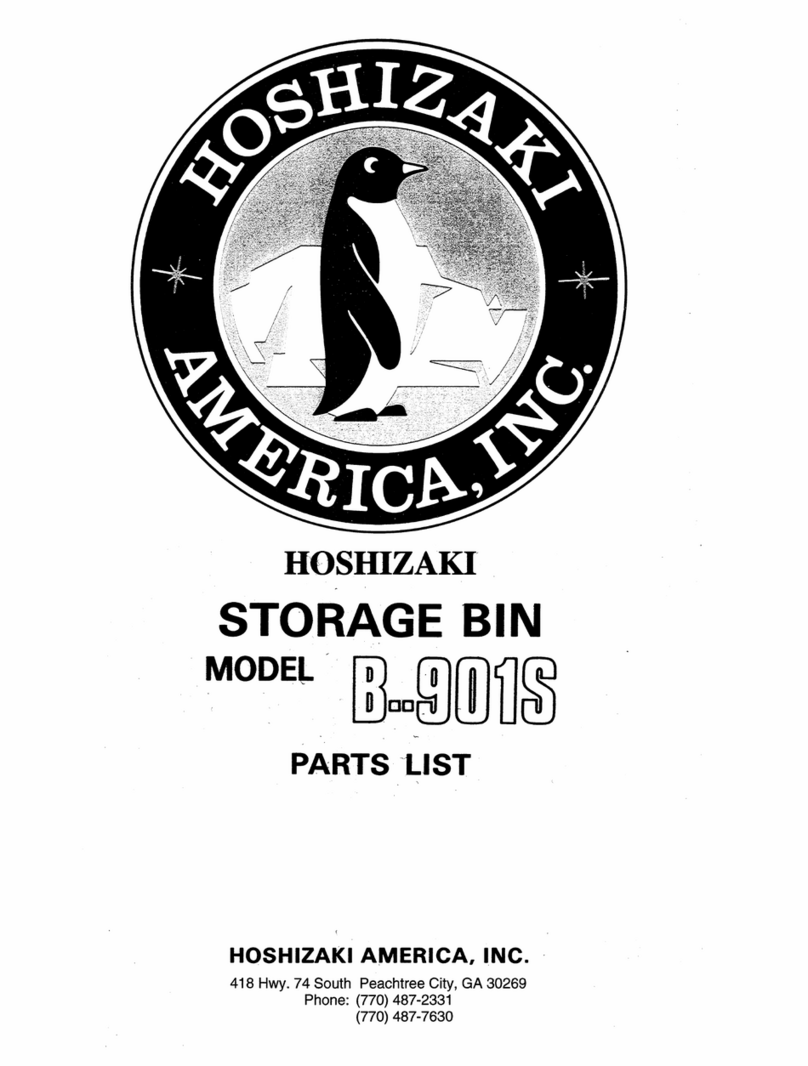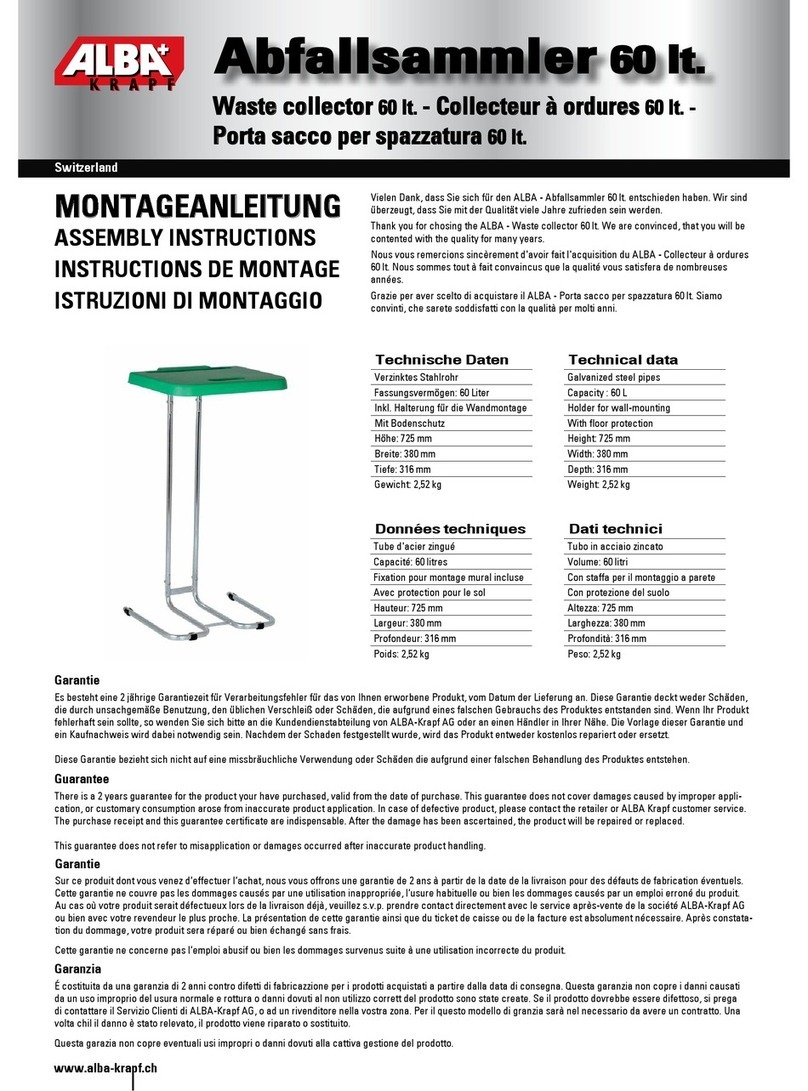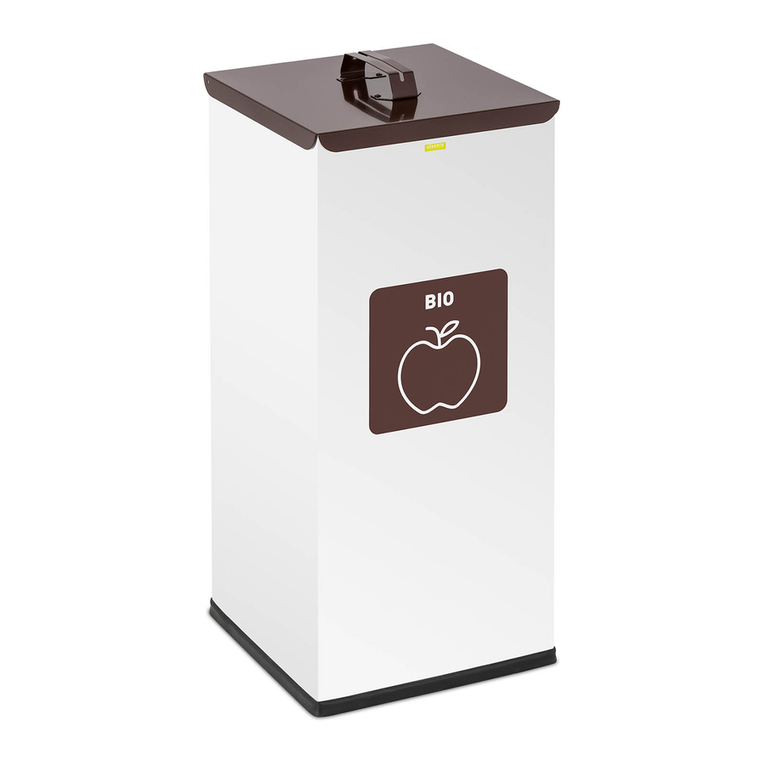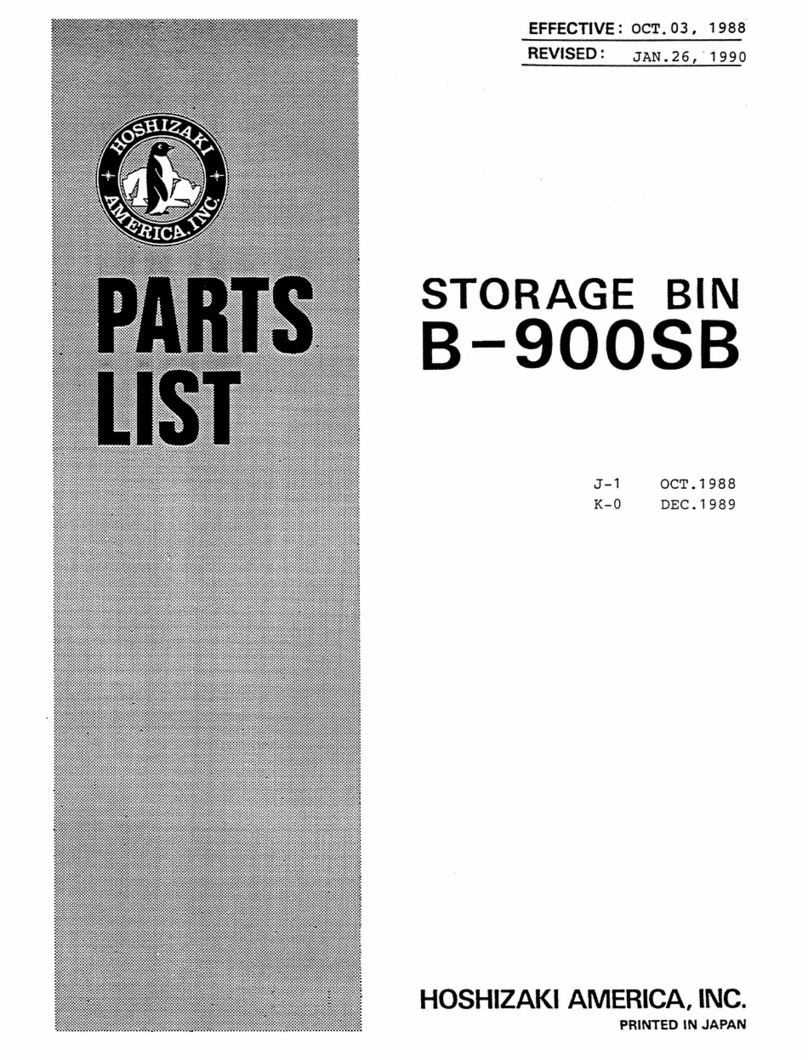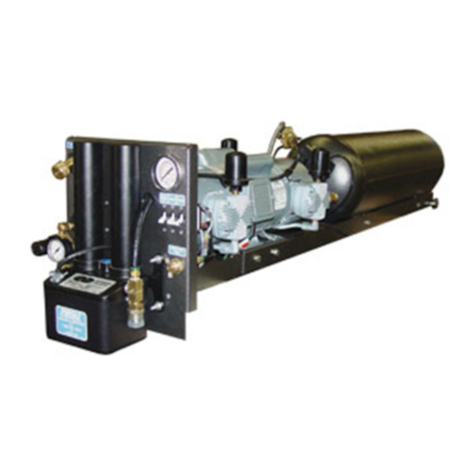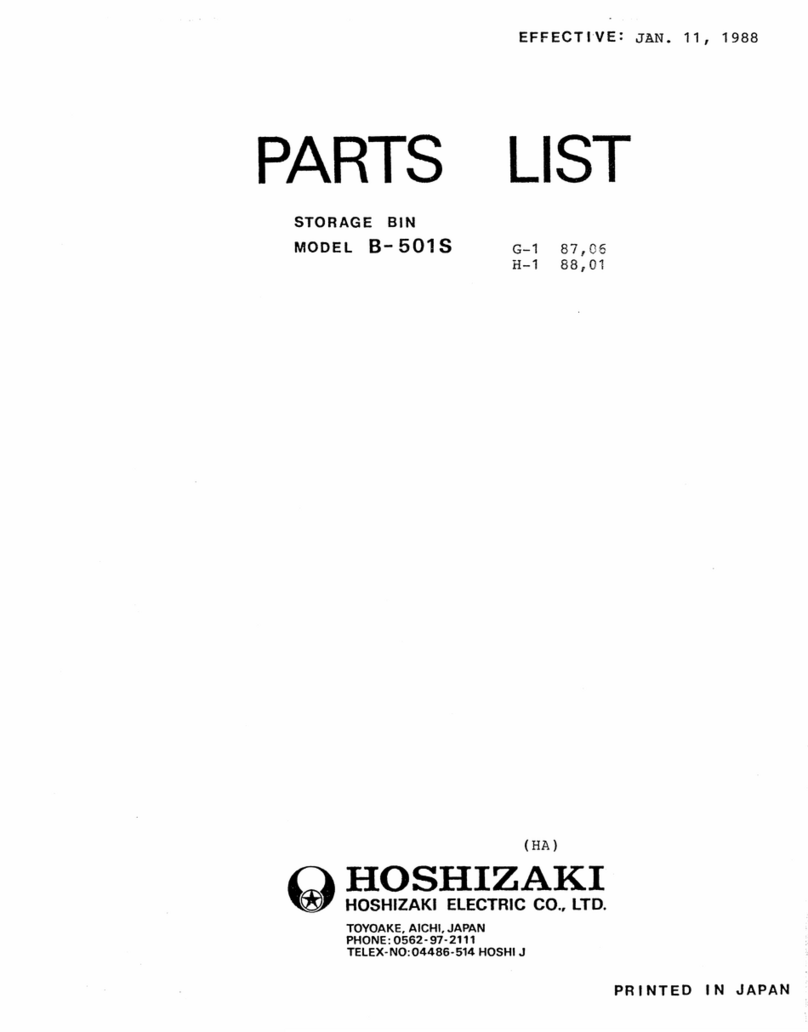
Table of Contents
PNEG-4018B 40-Series 2.66" Corrugation 18' Diameter Bin - Beta 3
Contents
Chapter 1 Safety ..................................................................................................................................................... 5
Safety Guidelines .................................................................................................................................. 5
Cautionary Symbols Definitions ............................................................................................................ 6
Safety Cautions ..................................................................................................................................... 7
Safety Sign-Off Sheet ......................................................................................................................... 11
Chapter 2 Decals .................................................................................................................................................. 12
Overfill Warning ................................................................................................................................... 14
Chapter 3 General Overview ............................................................................................................................... 15
General Information ............................................................................................................................ 15
Anchor Bolt Charts .............................................................................................................................. 15
Tools Required for Construction ......................................................................................................... 17
Guidelines for Proper Storage of Grain Bin Materials Prior to Construction ....................................... 17
Guidelines for Construction Procedures and Lifting Jack Usage ........................................................ 18
Instructions for Stirring Devices .......................................................................................................... 19
Guidelines for Placement of the Decal Sidewall Sheet ....................................................................... 20
Chapter 4 Bolt and Nut Usage ............................................................................................................................ 21
Hardware Requirements for Sidewalls and Stiffeners ......................................................................... 21
Bolt Identification ................................................................................................................................. 24
Color Chart for Bin Hardware Bucket Lids .......................................................................................... 28
Chapter 5 Assembling Sidewall Sheets ............................................................................................................. 29
Color Codes for Sidewall Gauge Identification .................................................................................... 29
Caulking Detail for Standard (Non-Laminated) Sheets ....................................................................... 30
Caulking Detail for Laminated Quad Pattern Sheets .......................................................................... 32
Chapter 6 Base Angle Installation ...................................................................................................................... 35
Installing the Base Angle ..................................................................................................................... 35
Anchor Bolt Detail ............................................................................................................................... 36
Installing the Base Angle Shims .......................................................................................................... 37
Anchor Bolt Washer Installation .......................................................................................................... 38
Chapter 7 Stiffeners ............................................................................................................................................. 39
Stiffener Part Number Description ...................................................................................................... 39
Color Codes for Stiffener Gauge Identification .................................................................................... 39
Outside Stiffened Laminated Stiffener to Sidewall
(10 Gauge Laminated and Thicker Only) ............................................................................................ 40
Standard Stiffeners ............................................................................................................................. 41
Top Stiffeners ...................................................................................................................................... 42
Stiffeners Splice .................................................................................................................................. 43
Base Stiffeners .................................................................................................................................... 44
Base Boots .......................................................................................................................................... 45
Close-Punch Connection for a 1 Ring Top Stiffener (15-16 Gauge) and
a 2 Ring Stiffener (15-16 Gauge) ........................................................................................................ 45
Close-Punch Connection for a 1 Ring Top Stiffener (10-14 Gauge) and
a 2 Ring Stiffener (8-14 Gauge) .......................................................................................................... 46
Close-Punch Connection for a 1 Ring Top Stiffener (10-14 Gauge) and
a 2 Ring Stiffener (15-16 Gauge) ........................................................................................................ 46
2 Ring Top Stiffener (15-16 Gauge) to a 2 Ring Stiffener (15-16 Gauge) Connection ....................... 47
2 Ring Top Stiffener (8-14 Gauge) to a 2 Ring Stiffener (15-16 Gauge) Connection ......................... 47
2 Ring Top Stiffener (8-14 Gauge) to a 2 Ring Stiffener (8-14 Gauge) Connection ........................... 48
Close-Punch Connection for a 2 Ring Top Stiffener (16 Gauge) to a 2 Ring Stiffener (16 Gauge) .... 48
Close-Punch Connection for a 2 Ring Top Stiffener (16 Gauge) to a 2 Ring Stiffener (8-14 Gauge) . 49
2 Ring Stiffener (15-16 Gauge) to a 2 Ring Stiffener (15-16 Gauge) Connection ............................... 49
Close-Punch Connection for a 2 Ring Stiffener (16 Gauge) to a 2 Ring Stiffener (16 Gauge) ........... 50
